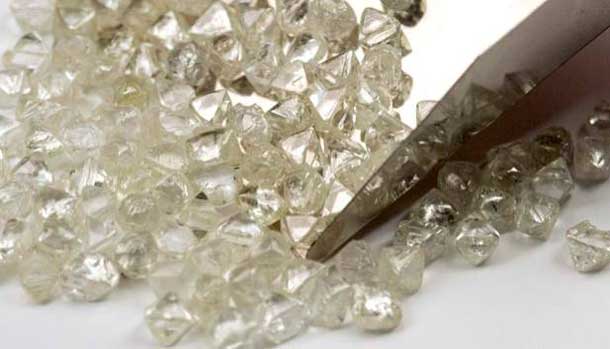
By Tanisha Heiberg
KROONSTAD, South Africa – (Reuters) – Anglo American’s AAL.L diamond unit De Beers is piloting a project to capture carbon in the rock from which diamonds are extracted to offset harmful emissions, the company said.
As planet-warming carbon emissions rise globally, many countries have adopted or proposed a form of tax on emissions and companies in the mining and manufacturing sector are concerned that this will hit their future profits.
South Africa proposed a tax of 120 rand ($9) per tonne on carbon emissions in 2012 but postponed it on worries that it would hurt profits already eroded due to a global commodities slump and higher electricity tariffs.
De Beers said it aimed to remove as much carbon as it emits within five to ten years, and will select one of its mines for the project due to start in 2019.
“This project offers huge potential to completely offset the carbon emissions of De Beers’ diamond mining operations,” project leader and geologist Evelyn Mervine said.
De Beers wants to store carbon dioxide in the kimberlite rock once all the diamonds have been removed. The kimberlite turns into a solid compound when mixed with carbon dioxide.
Mervine said the carbon dioxide can be locked away in the kimberlite “for thousands to millions of years.”
Currently, carbon dioxide can be stored deep underground. But environmental activists say there are uncertainties over the long-term implications of underground or submarine storage and there is still the risk CO2 might leak into the atmosphere.
De Beers estimates it would cost $10 to $20 per tonne of carbon dioxide, which could reduce with new technology compared with carbonation plants, which cost around $50 to $100 per tonne of carbon dioxide.
The project aims to accelerate the process and offset man-made emissions through different technologies including breaking up the rocks to increase the surface area and using special microbes, Mervine said.
“This is likely to be one of the easiest and least costly methods of carbon dioxide disposal,” Stuart Haszeldine, professor of carbon capture and storage at Edinburgh University said.
However, Haszeldine said difficulties could include safeguarding against toxic effluent and ensuring that all of the kimberlite stored in vast tailings dams are able to react with the carbon dioxide.
De Beers launched initial studies on the project in 2016 at its Voorspoed mine in South Africa’s Free State province.
If successful, De Beers plans to roll out the technology to its other operations.
“This project could play a major role in changing the way not only the diamond industry, but also the broader mining industry addresses the challenge of reducing its carbon footprint,” De Beers Chief Executive Bruce Cleaver said.
($1 = 13.5316 rand)
(Additional reporting by Barbara Lewis in London; Editing by James Macharia)


